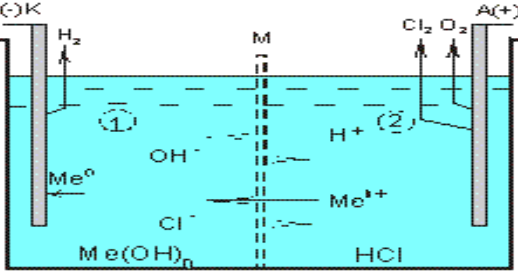The main task of the Republic to date, along with the development of Business agricultural production based on advanced technologies is a priority. One of the main sources of increasing agricultural production is the arrangements for the timely conduct of plants agro-technical measures and effective fight against pests. Now, it is widely used chemical and biological methods to combat plant diseases and pests. Especially for several years trichogramma is used against the osmic, cotton and other scoop on cotton and vegetable crops in the conditions of Central Asia (1).
It is known that this type of trichogramma propagated by infecting grain moth eggs. Trichogramma in eggs of grain moth is a homogeneous free-flowing mass of eggs. The content in 1 gram — 50 thousand parasitized eggs. If natural trichogramma of larvae collected in the autumn, are used as a raw material, the pupa taken from butterfly larvae is used in order to increase its amount. In other cases, this process is done in a specific bio laboratory conditions using breeding larvae of sitotrogi obtained by multiplication of barley grain. For improved production efficiency of barley grain sitotrogi larvae in production conditions (room temperature, purity, moisture content etc.) and the associated sources of production technologies.
Today breeding process stages of the moth and butterfly larvae at bio-factory and biological laboratories is mainly produced with the help of — preparation for infesting barley grains with larvae of sitotrogi, infesting process of barley with larvae of sitorogi, caring for larvae of sitotrogi and collecting larvae of sitotrogi butterfly (2).
Our first experiments we conducted during 2015–2016 years in the laboratory «Bioservis» in Namangan city. As a chief during the experiment, as the basis barley grains infected with larvae of sitotrogi were taken. This process is done properly in the following way. Washing and cleaning barley grains, achieving 15–20 % humidity, as well as distribution to the 13 kilogram cassettes of 3–4 cm thick and infecting larvae of sitotrogi by pollination. Developing sitotrogi larvae begin to infest grains of barley. At this time increasing in grain temperature and reducing its moisture content occur. In bio-factory in such a process it is used tap water or irrigation ditches water to achieve the desired temperature and humidity. We used useful electrochemical water instead of the usual water in our experiment to infect grains with larvae of sitotrogi and achieve moisture of grains.
The production technology of electrochemical activated water is very simple. To this ordinary tap water must be subjected to electrolysis through diaphragmatic electrolyser. The diaphragm prevents mixing of solutions formed around the electrodes. The resulting water is composed of two parts, the first part has alkaline medium (pH = 9.0–10.5), the second part has an acidic medium (pH = 3.5–4.5). The total hardness of the alkaline medium of water equal 2.1–2.4 mg. equ/ l (UzSST 950/200 norm 7–10 mg.equ / l), the number of ions Cl- 24,7–35,2 mg / l (950/200 norm 250 mg / l), the amount of SO4–2 28–42 mg / l (UzSST 950/200 norm 400–500 mg / l) (3).
In practice it has been proved that under the action of direct current to water on certain voltage, some physical and chemical properties are changed, including the hydrogen component in water, redox potential, viscosity, surface tension of water.
The process of electrochemical activation of tap water can be shown schematically as follows (4) (Figure 1):

Fig. 1. Scheme of the electrochemical activation of water
The experiments consist of 3 options and are carried out in three repeats. The first option is a method when barley grains soaked in ordinary tap water and it is determinant as a control option. In the 2nd option the grains soaked in electrochemically activated water pH = 9.0, and in the 3rd option electrochemical water pH = 10.0 is used. The results of experiments showed that in control option, for 1000 kg of barley grains was obtained 6085 gr of the sitotrogi eggs, in the 2nd option 6300 gr, in the 3rd option 6600 gr. This shows that using the electrochemically activated water to grains of rye at infecting them with sitotrogi eggs is effective.
According to the study, the following conclusions:
- producing electrochemically activated water pH = 10.0), up to two days. After two days, the pH of the water is neutralized.
- The analysis shows that the electrochemically activated water in alkaline medium total hardness, chloride and sulfate below normal data rates, and in an acidic environment were higher data rates.
- Preparation of water anolyte portions (acidic environment) can use the neutralization of laboratory rooms, as it has water disinfection ability.
- The use of electrochemical activated water for larvae sitotrogi and contamination of grain passed effective result.
- It is advisable to use 35–40 liters of water electrochemically activated to preserve moisture in normal conditions 1,000 kg of contaminated grain.
References:
- Залепухин И. Д., Пасько О. А., Аксенова Э. А. Применение активированной воды в сельском хозяйстве и биотехнологии.- Томск. «Наука и производства».1998
- Алимухаммедов С. и др. Биологическая защита. Ташкент. «Мехнат». 1989
- Абдуллаев М. и другие Эффективность использования электрохимической активированной воды в процессе разведения восковой моли в биолабораториях. «Молодой ученый» ежемесячный научный журнал. Москва. № 8 1.06.2014
- Абдуллаев М. Т., Хайитов Б. А., Юсупов Д. Р. Изучение нормативных условий выкормки восковой моли на основе электрохимический активированной воды/Международный научный журнал http://www.inter-nauka.com/issues/2016/6/1270







